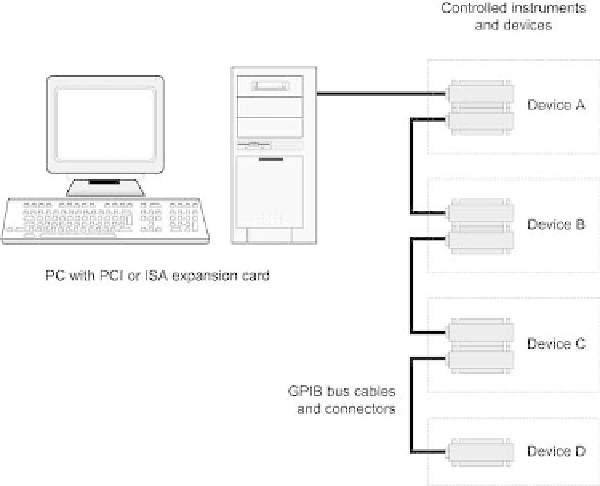Hardware Reference
In-Depth Information
Command group
Abbreviation
Function
Command byte
Addressed command
ACG
Used to select bus function affecting listeners (e.g. GTL
00-0F
which restores local front panel control of an instrument).
Universal command
UCG
Used to select bus functions which apply to all devices
10-1F
(e.g. SPE which instructs all devices to output their serial
poll status byte when they become the active talker).
Listen address
LAG
Sets a specified device to listen.
20-3E
UNL
Sets all devices to unlisten status.
3F
Talk address
TAG
Sets a specified device to talk.
40-5E
UNL
Sets all devices to untalk status.
5F
Secondary address
SCG
Used to specify a device sub-address or sub-function
60-7F
(also used in a parallel poll configure sequence).
Bus configurations
Since the physical distance between devices is usually quite small (less than
20 m), data rates can be relatively fast. In fact, data rates of between 50 and
250 KB/s are typical, however, to cater for variations in speed of response, the
slowest listener governs the speed at which data transfer takes place. In order to
achieve the highest data rates (up to 1 MB/s) it is advisable to restrict the overall
length of the bus and to ensure that the maximum separation between devices
is about 2 m. Furthermore, no more than 15 devices should be present on the
bus and at least two-thirds of those present should be in the powered on state.
Figures 8.6 and 8.7 show two possible arrangements. The first of these (Figure
8.6) shows a basic
daisy chain bus
arrangement where each device is linked to
the next device in the chain whilst the second arrangement (Figure 8.7) shows
Figure 8.6
Typical IEEE-488 bus configuration (daisy chain configuration)





